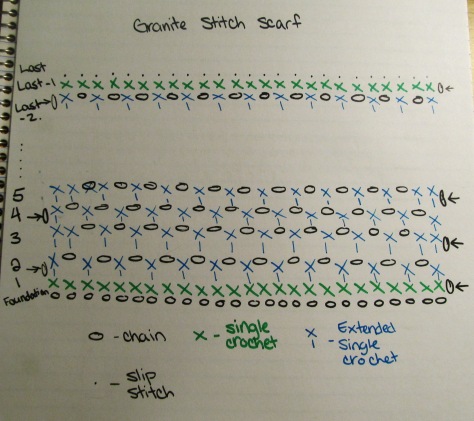The past couple of days I’ve been working on making potholders. In the past I’ve made them by sewing 2 square dishcloths together or by using a double-thick pattern, like this one, which makes a gorgeous potholder but takes a long time and a lot of yarn.
I wanted something quick and easy, I also had a lot of cotton yarn in various lengths and colours so I wanted something that I could change colours easily when my scraps of yarn ran out.
Here’s what I came up with:
A circular potholder! These work up really quickly, they’ve been taking me under an hour from start to finish. I think they look nice with both variegated and solid colours. I made 4 out of cotton and 1 out of wool.
Hooray for busting through my cotton stash! There’s still some left, but this definitely left a dent. I think I’m going to try making some felted ones with my wool stash.
I’m still a little undecided which one I like the most. I think the purple/green one is my favourite, but my partner likes the green/beige one.
Basically I made 2 circles using double crochet, then joined them together. It’s a pretty straight-forward pattern, but nonetheless I wrote it up to share.
Circular Potholder
*Note: Ch 3 at start of every round counts as a stitch
Materials:
-Worsted weight cotton or wool (I’ve read that acrylic will melt, but I’m not sure if it’s true)
-Size I/5.5 hook
** A note about gauge: **
If you’re finding that your circle is curving up into a bowl-shape, you need to go up a hook size. (Try size J/6.0)
If you’re finding that your circle is too slack and when you try to lay it flat there’s an extra bit of material that you can’t smooth down, you need to go down a hook size. (Try size H/5.0)
Pattern (make 2):
Round 1: In a magic circle, ch 3 (counts as 1 DC), work 11 DC into ring, join. {12}
Round 2: Ch 3, work 2 DC into each st around (11 times). Work 1 DC into last st, join. {24}
Round 3: Ch 3, (work 2 DC into next st and 1 DC into next st), repeat around (10 more times). Work 2 DC into last st, join. {36}
Round 4: Ch 3, (work 2 DC into next st and 1 DC into each of the next 2 sts), repeat around (10 more times). Work 2 DC into next st and 1 DC into next st, join. {48}
Round 5: Ch 3, (work 2 DC into next st and 1 DC into each of the next 3 sts), repeat around (10 more times). Work 2 DC into next st and 1 DC into next 2 sts, join. {60}
For the next round I switched to single crochet
Round 6: Ch 1 (does not count as a st), (work 2 SC into next st and 1 SC into each of the next 4 sts), repeat around and join to first SC {72}
Fasten off, weave in ends.
Finishing:
– Holding the 2 ‘wrong sides’ together, join the 2 circles together.
Edging options:
– Single crochet around
-Slip stitch around
-Crab stitch/reverse single crochet (this is the one I used for the cotton potholders)
For the ring (optional):
– Ch 10, sl st into potholder, ch1 & turn
– Sc 15 evenly into ring created by chain (i.e. not into individual stitches, just into the ring)

















